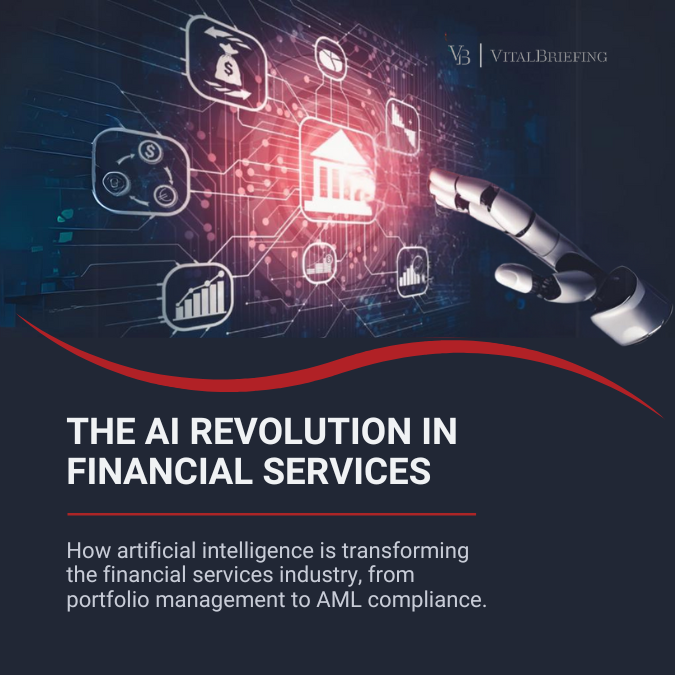The world of cryptocurrencies and decentralized finance is in a state of flux, with the industry facing significant challenges and opportunities. The Paris Blockchain Week’s speakers delved into the evolving crypto landscape, discussing the loss of trust in the ecosystem and the potential for mainstream adoption through technical upgrades and innovative solutions.
They shared their insights on the impact of stablecoins, DeFi, and central bank digital currencies (CBDCs) on the future of finance, as well as the importance of bridging the gap between crypto and traditional finance through education, diversification, and better risk management.
I. The Evolving Crypto Landscape: Trust, Trends, and the Future of Finance
“The [recent] events will have a very dramatic impact on the future of the ecosystem. We have been building as a community based on trust over the last couple of years, not only with regulators and policymakers, but with institutional investors too. Unfortunately, through some of the events that we had in the last couple of months, this trust has been broken. And that’s a shame.” Henri Arslanian, managing partner of Nine Blocks Capital Management
The crypto industry has faced a significant loss of trust recently due to a series of unfortunate incidents, including the collapses of TerraUSD and LUNA, as well as issues surrounding crypto exchanges such as FTX (see my previous article “About crypto: not all winters are wonderlands” for a retrospective on this topic).
Traditional institutional players were being drawn to this space for practical, capitalist reasons, such as the potential for new revenue streams and meeting client demands. As a result, crypto firms began to institutionalize themselves, implementing higher standards and certifications. However, despite these positive developments, the crypto ecosystem suffered various setbacks, leading to increased regulatory scrutiny.
As a result heightened reporting requirements, a focus on governance, and a push for greater transparency were clamped onto the crypto community. The path is being set for greater maturity and professionalism where the crypto industry must respect and learn from established procedures and industry experience.
During the Paris Blockchain Week, Henri Arslanian proposed three potential future developments for the crypto industry:
- Stablecoins, which have experienced rapid growth and currently have a combined market capitalization of $124 billion (for the top 5: Tether USDT, USD Coin, Binance USD, DAI and TrueUSD). They offer various benefits, including instantaneous cross-border transfers and an alternative to traditional currencies in emerging markets.
- Decentralized Finance (DeFi), which allows for a wide range of services without the need for centralized intermediaries. DeFi enables a first-principle approach to financial services, which opens new offerings and composability in a way that was previously not possible in traditional finance. Despite the issues raised in 2022, DeFi has remained operational and continues to generate interest.
- Central bank digital currencies (CBDCs), which central banks are exploring as a form of central bank money that incorporates the benefits of digital assets into traditional finance. Currently, over 90% of central banks are experimenting or running pilots with CBDCs. China is ahead in CBDC development by 4 to 6 years compared to the rest of the world, while the United States lags due to their status as the world’s reserve currency.
II. The Renaissance of Mainstream Adoption? Discovery of New Opportunities
Bitcoin has had a renaissance in the last 90 days, because some of these boring but important technical changes happen under the hood for these emerging ecosystems, ultimately unlocking innovation. – Ryan Selkis, CEO of Messari
During his keynote speech, Ryan Selkis highlighted several important points regarding the potential of the largest cryptocurrencies on the market:
- Technical upgrades, such as network privacy and changes to the transaction format of Bitcoin, like Segregated Witness (SegWit) and Taproot, are unlocking transformative potential, leading to increased adoption and demand for block space.
- Ethereum’s account abstraction is another significant innovation that allows digital wallets to become increasingly intelligent, enabling social recovery, fee payment by startups, and bundling transactions for a better user experience.
- Decentralized social and consumer apps are becoming increasingly competitive and symbiotic with decentralized finance, providing new monetization opportunities with lower fees and improved infrastructure.
- Following the boom-and-bust cycle of the tech wave, the industry is now in the installation phase, where infrastructure is being built using the proceeds from the boom times.
Although there are potential risks and challenges associated with integrating real-world assets and traditional finance into DeFi systems, and the evolving relationship between DeFi and centralized finance, several factors may encourage mainstream adoption.
Firstly, the decreasing cost of deploying a crypto app or service is making it more accessible for developers. In addition, the decentralized infrastructure is growing as a viable alternative to centralized services such as Amazon Web Services or Google Cloud. To address scalability concerns, Ethereum scaling solutions like Arbitrum and Optimism are reducing costs for running transactions and services on the chain. Finally, platforms like MakerDAO are integrating real-world assets into their collateral pools, which is generating yields.
At a more global level, decentralized exchanges such as Uniswap have seen a significant increase in trading volume, with some even rivaling centralized exchanges like Coinbase. The share of cryptocurrencies held in self-custody is also on the rise, as more individuals view it as a hedge against a fragile financial system. To address the increased regulatory scrutiny brought on by recent scandals, the industry should support regulators in avoiding misguided policies and restrictions that may stifle innovation.
During the conference, Eric Anziani, COO of Crypto.com, and Emma Joyce, CEO of GBBC Digital Finance, touched on the topic of tokenizing the real economy. They agreed that finding use cases with mainstream appeal is essential for overcoming markets’ fears and achieving mainstream adoption of crypto and AI. Tokenizing the real economy is a complex process, with early use cases including content, art, and music. However, stablecoins themselves represent the tokenization of real money and have already gained significant adoption.
Tokenization experiments with stocks, bonds, and real estate also show promise, although real estate tokenization faces jurisdictional complexities. Regulatory clarity is critical for businesses in the FinTech sector, as uncertainty makes decision-making more complex.
Luxembourg, globally recognized for its progressive stance on blockchain, has consistently developed its security token regulations. In 2019, it passed Blockchain Law I, endorsing the use of secure electronic systems for securities issuance and circulation, and establishing the legality of digital ledger technologies like blockchain for holding securities. In 2021, Blockchain II Law further strengthened the legal framework around dematerialized securities. The 2023 update, Blockchain III Law, supplemented previous legislations and implemented EU Regulation 2022/858 on a DLT Pilot Regime, updating the definitions of financial instruments under existing laws to incorporate those from the European framework.
Following this, Azimut, an asset management company with a Luxembourg-based product platform, has become the first firm to be authorized by the national supervisory authority, the Commission de Surveillance du Secteur Financier, to manage investment strategies indirectly based on virtual assets such as Bitcoin, Ethereum, and other sub-asset classes such as DeFi tokens. The company launched AZ RAIF II – Digital Asset fund, the first fund under Luxembourg law to provide exposure to cryptocurrencies, digital assets, and other fintech or blockchain-linked companies.
The European Investment Bank also anticipates that the digitalisation of capital markets will bring significant benefits, including reduced intermediaries and fixed costs, improved market transparency, and faster settlement times. They issued their inaugural digital bond in April 2021. As of January 31, 2023, they ventured further by launching their first Sterling-denominated digital bond through a mix of private and public blockchains, successfully raising £50 million.
III. Charting a Course Through the Yield Landscape: Bridging the Worlds of Crypto and Traditional Finance
During “The Need for Yield” panel, moderated by Cinderella Amar, co-founder at Glass Slipper Ventures, industry experts including Maxime Boonen, Founder of B2C2 & PV01; Tim Grant, head of EMEA Galaxy; Yoann Caujolle, managing partner at Rockby; and Charlie Meraud, CEO of Woorton, discussed the importance of applying basic economics principles to the crypto world.
The panelists highlighted that, while there is no such thing as “crypto-economics”, the basic building blocks of economics still apply in the crypto world. Financial institutions offer various services such as lending, investing, and managing money, and their profitability is closely tied to assessing and managing risk. The level of risk taken on is influenced by the type of investor they work with; institutional investors can take on higher levels of risk for potentially higher returns, but are subject to stricter regulations, while retail investors are typically more risk-averse. New mechanisms can be created to generate the movement of money and borrowing/lending opportunities; however, the fundamental rules of finance must still be observed.
The panelists also discussed the significant difference in interest rates between traditional finance and digital assets, with digital assets typically offering much higher yields. However, the high yields in the crypto world often correlate with high credit risk due to its less regulated nature compared to traditional finance, and significant volatility; the potential for abrupt value changes heightens the investment risk, with the added complexity of anonymity and lack of tangible collateral in numerous crypto transactions.
Additionally, high yields in crypto can be attributed to other mechanisms inherent to certain cryptocurrencies like proof-of-stake (PoS). PoS-based cryptocurrencies offer staking rewards, where holding funds in a wallet supports blockchain operations, yielding additional coins. This leads to high potential returns but also exposes holders to price volatility and network attacks. Advanced strategies like liquidity mining or yield farming also provide token earnings but carry risks like smart contract bugs, platform insolvency, and impermanent loss. Further, speculative trading in new projects and lending platforms, where crypto is lent out for interest, contribute to collateral volatility risk.
Possible solutions to bridge the gap between traditional finance and the digital asset market include bringing traditional interest rates onto digital asset technology or giving traditional players access to the high yields in the digital asset market. Education and diversification in the crypto market for traditional players to feel comfortable entering are also necessary.
Finally, the panelists emphasized the need for better risk management in both industries, as fraud can happen anywhere. Traditional finance can learn risk management from DeFi, while DeFi can benefit from the efficiency and collaboration that traditional finance can bring.
Conclusion
The crypto industry is experiencing a period of transformation and uncertainty, marked by trust issues, and increased regulatory scrutiny. However, the potential for mainstream adoption remains promising, thanks to the rapid growth of stablecoins, DeFi, and the exploration of CBDCs.
Successful integration of crypto into traditional finance will require to focus on education, risk management, and the development of innovative use cases with mainstream appeal. Traditional finance and the crypto industry can overcome the challenges they face and unlock the full potential of this emerging financial landscape if their actors learn to work together.

